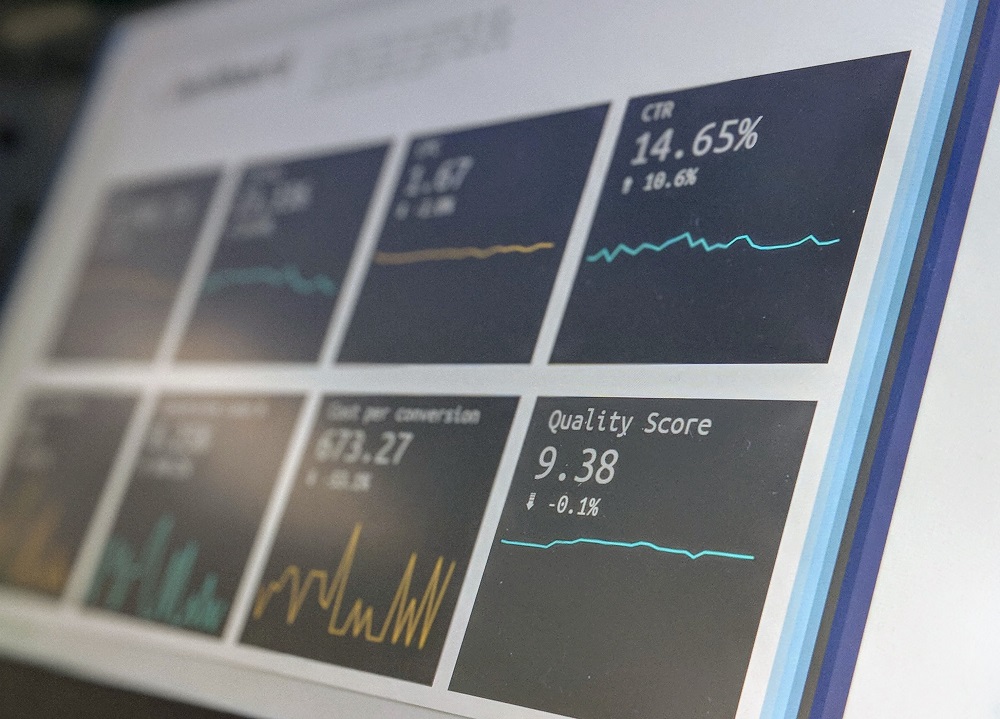Most companies now rely heavily on data as a means to save money, work more efficiently, and stay in business for the long haul. It's crucial to companies' day-to-day operations, but the industry hasn't evolved to take advantage of the vast troves of new data that have become available.
Analytical tool management is similarly mired in the past; companies employ large armies of engineers to wrangle analytical insights, but the resulting tools are rarely used in the field. Many businesses spend a lot of money on analytical solutions at the end of the year to perform one-off analyses of data that are forgotten once the renewal process is over.
The analysis of large amounts of data can provide valuable insights for businesses, allowing them to make better decisions. The business sector, however, must address widespread obstacles in order to reach its full potential. All brands can benefit from regularly assessing their current data practices and data analytics.

Benefits of Data Analytics for UK Businesses
Poor Data Quality
To address poor data quality, organizations should implement data governance practices, such as data cleansing and validation techniques. Implementing data quality checks during data collection and investing in automated data purification tools can assist in enhancing data precision. Regular audits and data profiling can identify and correct problems with data completeness, consistency, and precision.
Any analytics group or endeavor would do well to prioritize data quality. The quality of an analysis is only as good as the quality of the data used to do it. While no study ever sets out to employ low-quality data, many of the issues listed below with data analytics either directly cause low-quality data or enhance the likelihood of data deterioration.
Data Silos
Organizations can eliminate data silos by implementing data warehouses or integrated data management platforms. These solutions consolidate data from numerous sources into a central repository, thereby making it accessible and usable across departments. Moreover, establishing cross-functional data sharing and collaboration processes can foster a culture of data transparency and collaboration.
When information is kept in silos within individual organizations and not shared or connected with other organizations, we have a problem known as "data silos." For instance, if data from both marketing and sales is not housed in a single CRM or CDP, marketing may define campaign elements using only some of the customer information that is actually required.
Equally problematic is the possibility that records will become out of sync or erroneous if each database is handled independently. Separate system management also allows for granular customization of data element labels and formats. Because of these problems, information is often lacking, incorrect, or inconsistent. It's also possible that any plans or actions derived from the analysis will be incorrect. Analysts concerned with quality can then attempt to collect and integrate data from various systems in an effective manner.

However, the processes of data collection, cleansing, deduplication, and transformation may be slowed by the existence of several management and access protocols. Because of this, chances are wasted, and money is lost due to delays in making decisions.
Lack of Expertise
Investing in data analytics training programmes for current employees can assist in bridging the expertise divide. In addition to hiring data professionals, organizations can associate with external consultants or data service providers to gain access to specialized knowledge. Collaboration with universities or training institutions can be an effective method for recruiting new talent and enhancing the skills of existing employees.
Statistics, programming, and domain knowledge are just a few of the many talents necessary for successful data analytics. Data analytics can be severely impacted by a lack of competence in any of these areas, leading to erroneous insights and bad conclusions.
It might be difficult for analysts to clean and validate data if they don't have a solid foundational understanding of the elements that contribute to data quality. When using sales data for inventory and marketing planning, mistakes in data entry may go unreported. It's possible that manufacturing and promotional decisions could be erroneously based on sales data due to inaccurate labeling between systems. Similarly, an analyst who isn't knowledgeable about A/B testing may propose ineffective optimisations.
Data Overload
Organizations can utilize advanced analytics techniques such as machine learning and artificial intelligence to manage data inundation. These technologies can automate data processing, pattern recognition, and the generation of insights, making it simpler to manage large data volumes. Prioritizing data sources based on their relevance and aligning analytics efforts with key business concerns are also effective methods for managing data overload.

In the past decade, the increase in processing capacity and data accessibility has fueled the power of analytics and insights. However, the large amounts of data that result from analytics can contribute to data overload, making it difficult to extract meaningful insights. As analysts are confronted with increasingly unwieldy datasets, they may not be able to filter through everything to discover meaningful insights.
Inadequate Tools
Data analytics is only as good as the tools that are used to perform it. Decisions can't be made quickly and accurately if there are barriers to accessing data. Decisions based on analytics can be impeded, at best, and at worst, delayed by the use of outdated platforms that are not interoperable with one another. Inefficient data processing caused by outdated or misaligned technologies makes it challenging to analyze massive data sets.
It is essential to invest in comprehensive analytics tools and technologies in order to perform efficient data analysis. Organizations should assess their current set of instruments and identify any gaps or limitations. Adopting modern analytics platforms with advanced features such as data integration, data visualization, and machine learning can enhance the efficacy and precision of data analysis. It is essential to regularly evaluate and upgrade tools based on changing business requirements and technological advancements.
Misalignment of the business
To align analytics initiatives with the business strategy, organizations must establish robust communication channels between business leaders and analytics teams. This requires a comprehension of the organization's strategic objectives, the identification of key metrics, and the alignment of analytics efforts with particular business challenges. Regular collaboration and feedback loops ensure that the focus of analytics initiatives remains on delivering value and generating meaningful results.
The value of data analytics to a company depends on its ability to put the insights gained to use. However, alignment issues with business processes can impede translation into action.

Each owner of a dataset or data-generating function may have their own unique set of business procedures. Unless measures are taken to standardize and integrate analytics across departments, they may be used independently. Therefore, insights may be insufficient without complete access to essential data for a consolidated picture of the customer.
The current analytics technologies may not be as sophisticated as the business processes themselves. If an organization's analytics tools aren't linked to its supply chain management software, for instance, it can miss out on immediate alerts about problems. Analysts' ability to detect patterns and produce reliable forecasts depends on how well their work is integrated into operational business operations.
All aspects of data analytics projects can be affected by the degree of business alignment. Analytics-derived KPIs should be consistent with daily business practices. Key measures, including average order value, customer acquisition cost (CAC), and client lifetime value (LTV) should be established if increased revenue is a primary objective. These key performance indicators (KPIs) will be difficult to identify and analyze if the company's many elements are not in sync with one another. If departments within an organization are not in sync with one another, the resulting datasets will be fragmented and unusable.
Managing performance over time also requires business alignment. To ensure that key performance indicators (KPIs) are being reached, data analytics requires constant monitoring and optimization. If one of your company's goals is to boost customer happiness, you should probably be collecting and analyzing client feedback on a regular basis. It can be difficult to pinpoint the sources of consumer dissatisfaction and put forth efficient solutions if there is a lack of alignment.
Poor Visualization
Organizations should invest in data visualization tools and resources to surmount poor visualization. These tools facilitate the creation of visually appealing and user-friendly interfaces, charts, and reports that effectively convey insights to stakeholders. Applying design principles such as simplicity, clarity, and context will ensure that visualizations are straightforward to interpret and facilitate decision-making.

Though it may appear unimportant, analysts' inability to effectively communicate insights and trends is due to inadequate or nonexistent data visualization. A company's ability to produce views that capture the full scope of the dataset findings may be limited by the availability of tools if the company stores data in several systems. Insights hidden in tabular data may emerge when visualizations are used.
Therefore, effective visualizations are a means of rapidly gaining comprehension. Messy or incomplete visualizations that leave out key information or have illegible labels will prevent stakeholders from gaining a full picture. Consequently, efforts will either be ineffective or not take advantage of favorable circumstances.
Inadequate Security
Organizations should implement robust data protection measures to ensure data security. This includes instituting encryption techniques for sensitive data, implementing access controls and user permissions, and monitoring and auditing data access on a regular basis. Compliance with data protection regulations, such as GDPR and HIPAA, is essential for data security. In addition, it is essential to conduct regular security audits and remain abreast of the latest security practices and technologies.
While most difficulties in data analytics can be categorized as a lack of correct insights or a failure to turn those insights into action, data security issues have consequences beyond lost opportunity.
Data analytics is subject to security breaches since it requires access to private data. Weak security can have a devastating effect on data analytics and expose businesses to cyber-attacks and other dangers. The problems associated with insufficient knowledge of, or poor preparation for, data security have been brought to light by recent laws and the ongoing deprecation of third-party cookies.

Data breaches, which expose private information, are a direct result of insufficient security measures. In the absence of appropriate safeguards, such as robust encryption and passwords, sensitive information may fall into the wrong hands. The monetary losses, tarnished reputation, and legal obligations that come as a result can be disastrous for a business.
Data analytics may be susceptible to malware and cyberattacks if insufficient precautions are taken to secure the data. For instance, unwanted software like viruses might compromise data if firewalls and antivirus programmes aren't in place to prevent it. Every department feels the effects of data loss, system outages, and business disruptions. In addition, malware and cyber-attacks can damage data analytics, necessitating extensive repair work before insights can be trusted again.
Even while outsiders provide the greatest risk to brands, internal dangers might compromise data analytics if proper precautions aren't taken.
Ad Platform Restrictions
When ad platforms impose restrictions, organizations can investigate alternative data sources to supplement platform data. This may entail integrating information from customer relationship management (CRM) systems, website analytics, or third-party data providers. Developing analytics solutions tailored to the organization's specific requirements can also assist in overcoming platform restrictions. Consider also collaborating with data partners who provide enhanced insights or access to additional data sources.
Data analytics options may be constrained, and analysis possibilities may be unintentionally narrowed due to the advertising-centric nature of systems like Microsoft Advertising, Amazon Advertising, and Google Ads. For instance, raw data is typically protected by advertising platforms. Instead, the reporting interface of such platforms provides aggregated data and pre-defined metrics to marketers. Raw data is essential for complex analysis, including the development of unique measures, the discovery of previously undetected patterns, and the execution of rigorous statistical modeling.

In addition, attribution modeling to ascertain the effectiveness of various touch points along the customer journey is constrained by ad platforms. The most effective models are data-driven "black box" models, which conceal their algorithms and the relative importance of various inputs and outputs. Single-touch models, such as first-click and last-click, are the simplest (and most widely used) types.
Read Also - What Is Data Democratization? How is it Accelerating Digital Businesses?
Conclusion
Businesses may now improve their decision-making and acquire a competitive edge with the help of data analytics. Businesses can boost their bottom line with the help of data analytics by determining business goals, gathering relevant data, and acting on that analysis. Professionals in this industry need a solid grounding in data analytics and an awareness of current trends and developments.
The analysis of large amounts of data can provide valuable insights for businesses, allowing them to make better decisions. However, in order to realize its full potential, businesses must address widespread obstacles. Every brand can benefit from regularly assessing the maturity level of its data science practices. Analytics data can provide valuable insights for companies that are proactive as well as alert.
We believe that every piece of data has a unique destiny waiting to be unveiled. As a leading Data Analytics Services and Solutions provider company, we are committed to helping our clients maximize the value of their data through strategic planning, advanced analytics, and cutting-edge technologies.
Our team of experts is passionate about unleashing the potential of data and transforming it into actionable insights that drive business growth and innovation. Whether you are looking to optimize your operations, improve customer experience, or explore new revenue streams, we have the expertise, tools, and resources to guide you every step of the way.









